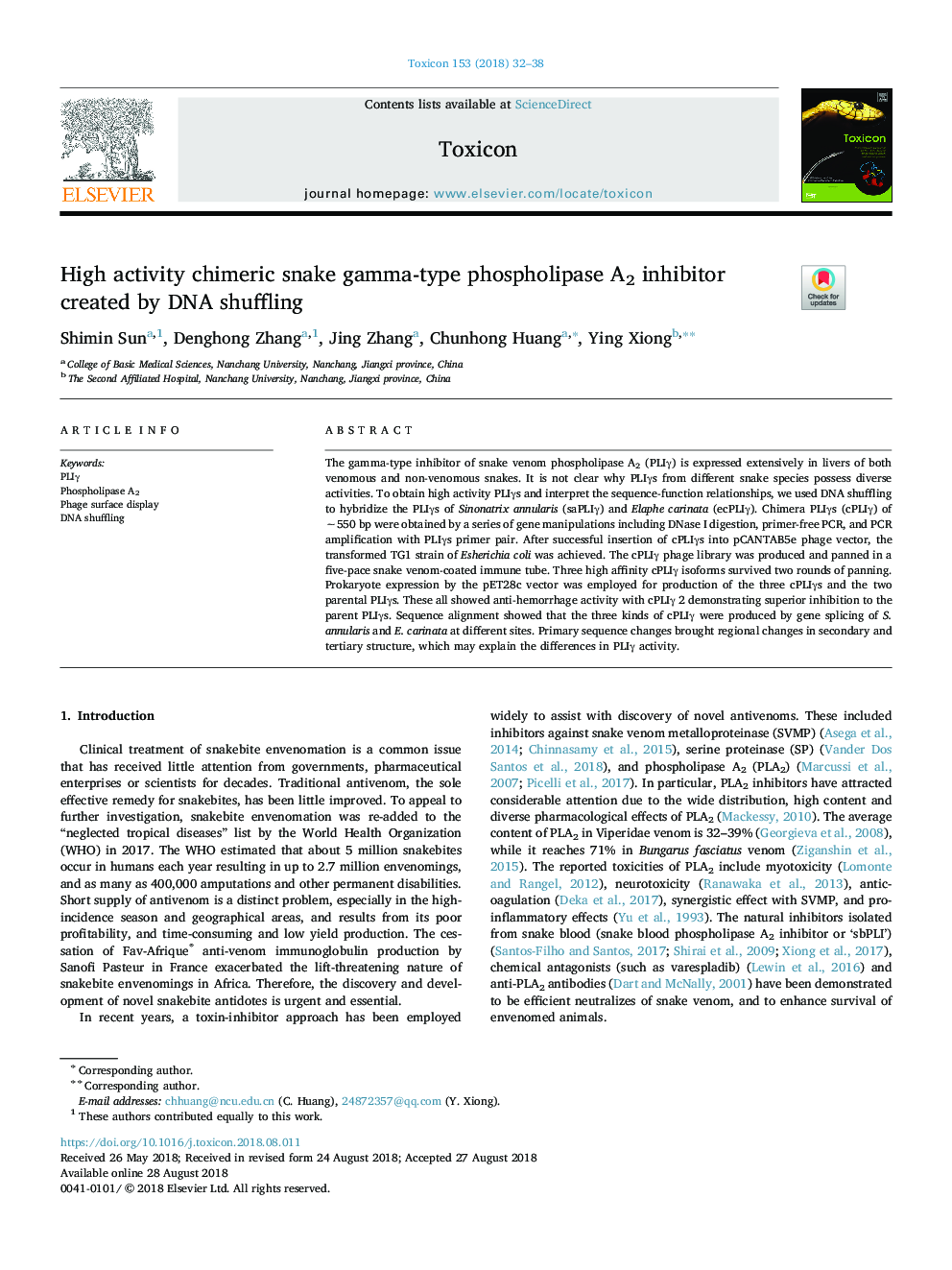| Article ID | Journal | Published Year | Pages | File Type |
|---|---|---|---|---|
| 10137118 | Toxicon | 2018 | 7 Pages |
Abstract
The gamma-type inhibitor of snake venom phospholipase A2 (PLIγ) is expressed extensively in livers of both venomous and non-venomous snakes. It is not clear why PLIγs from different snake species possess diverse activities. To obtain high activity PLIγs and interpret the sequence-function relationships, we used DNA shuffling to hybridize the PLIγs of Sinonatrix annularis (saPLIγ) and Elaphe carinata (ecPLIγ). Chimera PLIγs (cPLIγ) of â¼550 bp were obtained by a series of gene manipulations including DNase I digestion, primer-free PCR, and PCR amplification with PLIγs primer pair. After successful insertion of cPLIγs into pCANTAB5e phage vector, the transformed TG1 strain of Esherichia coli was achieved. The cPLIγ phage library was produced and panned in a five-pace snake venom-coated immune tube. Three high affinity cPLIγ isoforms survived two rounds of panning. Prokaryote expression by the pET28c vector was employed for production of the three cPLIγs and the two parental PLIγs. These all showed anti-hemorrhage activity with cPLIγ 2 demonstrating superior inhibition to the parent PLIγs. Sequence alignment showed that the three kinds of cPLIγ were produced by gene splicing of S. annularis and E. carinata at different sites. Primary sequence changes brought regional changes in secondary and tertiary structure, which may explain the differences in PLIγ activity.
Keywords
Related Topics
Life Sciences
Biochemistry, Genetics and Molecular Biology
Biochemistry, Genetics and Molecular Biology (General)
Authors
Shimin Sun, Denghong Zhang, Jing Zhang, Chunhong Huang, Ying Xiong,
